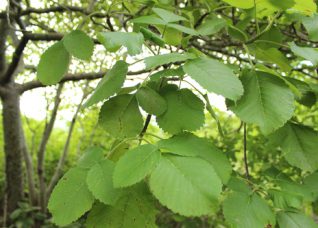
MinerAlert

MinerAlert
Amphipterygium adstringens
Anacardiaceae
IQuetchalalatl (White, 2000), cuyachinalá, maceran, matixeran, pacueco (Argueta, 1994).
Cuachalalá (Reko,1996), volador, palo santo (Schoenhals, 1988), cáscara (Ford, 1975).

This resinous and dioecious (male and female flowers are found in separate trees) tropical tree grows in southern Mexico (Mabberley, 2008).
The bark of the tree.
The bark of the tree is decocted in water and taken as a tea. The decoction can also be taken cold, used as a mouthwash to strengthen the gums or applied topically or intra-vaginally for various problems, including rashes and infections (Argueta, 1994).
A decoction made from the bark is drunk for the treatment of stomach problems and gastric ulcers (Quattroicchi, 2012). In Mexican traditional medicine, the tree bark is decocted and drunk as a tea for a myriad of health problems such as gastric ulcers, liver problems, as a blood purifier, to treat kidney infections, to lower cholesterol, for gall bladder stones, mouth ulcers, toothache, intermittent fevers, varicose veins, diabetes, against typhoid fever, malaria, and stomach cancer. The bark macerated in water is drunk during the day for ulcers. For wounds, a tea is drunk or the pulverized bark is applied to the skin. The white gum or resin of the tree is applied to the skin to treat boils or abscesses. The bark decoction is applied topically as a wash for skin problems or rashes in babies, for hair loss, for bites and stings from poisonous animals, as an aid to wound healing, intra-vaginally for infections, puerperal fever, vaginal secretions, for displaced uterus, and for “coldness” of the uterus. This plant is considered to be of a “hot” nature (Mendoza Castelán and Lugo-Pérez, 2011; Berdonces, 2009; Navarrete et al., 2006; Argueta et al, 1994; Martínez, 1989). A red dye is obtained from the wood (Berdonces, 2009; Mabberley, 2008).
A study by evaluated the anti-quorum sensing (a process of bacterial cell-cell communication that affects bacterial pathogenicity) potential of an anacardic acids mixture isolated from cuachalalate, to prevent the onset of bacterial infections as an alternative option to antibiotic therapy. The results of the study showed that the anacardic acids mixture isolated from this plant demonstrated anti-quorum sensing in the pathogenic bacterium Pseudomonas aeruginosa (Castillo et al., 2013).
A study evaluated the immune-stimulant effect of an aqueous extract from cuachalalate on immune cellular response in immune-suppressed mice. The results of the study showed that the aqueous extract from this plant proved to be a positive immune-stimulant agent in lymphoma bearing mice, thus supporting its use in traditional medicine for a depressed immune system (Ramírez-Leon, et al., 2012).
A study evaluated the effect of a cuachalalate methanol extract on the anti-inflammatory activity and pharmacokinetics of diclofenac, a non-steroidal anti-inflammatory drug or NSAID. The gastro-protective effect of the plant extract on the gastric injury induced by diclofenac was studied in rats. The results of the study indicated that the cuachalalate extract protected that rats’ gastric mucosa from the damage induced by diclofenac without altering either the anti-inflammatory activity or the pharmacokinetics of this drug (Navarrete et al., 2005).
Oviedo-Chávez et al. (2004) studied the potential therapeutic, anti-inflammatory properties cuachalalate. The researchers evaluated the use aqueous (AE) and hexane (HE) extracts from cuachalalate in two models of acute inflammation in laboratory animals The results of the study indicated that that AE and HE could possess different anti-inflammatory mechanisms of action.
Cuachalalate resin contains potential anti-inflammatory compounds including masticadienonic, alpha-hydroxymasticadienonic and masticadienonic/isomasticadienonic acids. Since this tree is dioecious (the male and female flowers are found in separate trees), major accumulations of masticadienonic, alpha-hydroxymasticadienonic acids and masticadienonic/isomasticadienonic acid mixtures were isolated from the female trees and a mixture of alpha-hydroxymasticadienonic acid, as well as a yet unidentified compound, were isolated from the male trees. The results of a preliminary study regarding its potential use as an anti-inflammatory showed that the compound alpha-hydroxymasticadienonic acid demonstrated strong anti-inflammatory activity (Olivera-Ortega et al., 1999).
Safety/Precautions:
Before you decide to take any medicinal herb or herbal supplement, be sure to consult with your health care professional first. Avoid self-diagnosis and self-medication: Always be on the safe side!